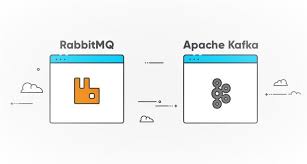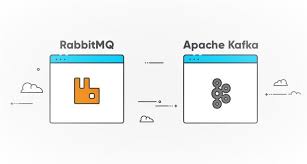
In data processing, message brokers ensure seamless communication between different system components. Two of the most widely used message brokers are Apache Kafka and RabbitMQ. Each has unique strengths, and understanding these can empower businesses to optimise their data processing pipelines. A data science course in Mumbai offers comprehensive training to help you master the tools and techniques used in the industry. This article will compare Apache Kafka and RabbitMQ, providing the information you need to decide on your message brokering needs.
Overview of Apache Kafka
It is an open-source distributed event streaming technology for real-time data pipelines and streaming applications. LinkedIn created it, and the Apache Software Foundation subsequently open-sourced it. This highlights its focus on managing large-scale, high-throughput, and low-latency data streams, making it ideal for real-time analytics and event-driven systems.
Kafka operates as a distributed system, meaning it can run on multiple servers, providing fault tolerance and scalability. It uses a publish-subscribe model, where producers publish messages to topics, and consumers subscribe to them to receive notifications. Kafka stores messages in a distributed log, allowing consumers to read them at their own pace, which is particularly useful for real-time data processing.
Overview of RabbitMQ
RabbitMQ is a traditional message broker implementing the Advanced Message Queuing Protocol (AMQP). Rabbit Technologies developed it and is now part of Pivotal Software. RabbitMQ is known for its flexibility, reliability, and ease of use. It supports various messaging protocols, including AMQP, MQTT, and STOMP, making it a versatile choice for different types of applications.
RabbitMQ operates on a message queuing model, where producers send messages to queues, and consumers receive messages from those queues. RabbitMQ’s ability to route messages through exchanges before they reach the queues allows for more complex messaging patterns, such as routing, topics, and fan-out. That makes RabbitMQ suitable for use cases that require complex message routing and processing.
Performance Comparison
Performance is one of the most critical factors when comparing Apache Kafka and RabbitMQ. Both platforms are designed to handle high volumes of messages, but they do so in different ways.
- Throughput: Apache Kafka is intended to handle millions of messages per second with low latency. Its distributed design enables horizontal scaling by adding additional brokers to the cluster, making it an ideal solution for real-time data processing and streaming applications that need high throughput. While RabbitMQ can handle large numbers of messages, it is best suited for situations where message durability and delivery assurances are more critical than sheer throughput.
- Latency: Kafka is designed for low-latency message processing, making it ideal for applications that demand almost immediate data transmission. One of its primary advantages is its capacity to handle large-scale data streams with negligible latency. RabbitMQ, although capable of low-latency messaging, may exhibit increased latency in instances that include complicated routing and message processing algorithms.
Scalability and Fault Tolerance
Scalability and fault tolerance are crucial when choosing a message broker, especially for businesses that process large amounts of data. Kafka and RabbitMQ offer robust solutions in these areas, providing a secure and reliable foundation for your data processing needs.
- Kafka’s distributed architecture allows it to scale quickly by adding more brokers to the cluster, with each broker capable of handling multiple topic partitions. This horizontal scalability makes Kafka well-suited for handling large-scale data streams that require high availability and fault tolerance.
- RabbitMQ’s Scalability: RabbitMQ can also be scaled horizontally by adding more nodes to the cluster, but its scalability is more limited compared to Kafka. The complexity of the messaging patterns and the number of queues in the system can impact RabbitMQ’s performance. While RabbitMQ can handle high message volumes, it may require more careful tuning and management to achieve the same level of scalability as Kafka.
- Fault Tolerance: Both Kafka and RabbitMQ offer fault tolerance but achieve it differently. Kafka’s distributed architecture ensures that data is replicated across multiple brokers, providing high availability and durability in the event of a failure. RabbitMQ provides fault tolerance through clustering and mirrored queues, where messages are replicated across multiple nodes in the cluster. However, RabbitMQ’s fault tolerance may require more manual intervention and configuration than Kafka’s automated replication.
Message Durability and Delivery Guarantees
Message durability and delivery guarantees are essential considerations, particularly for applications that require reliable message processing.
- Kafka provides strong durability guarantees by writing messages to a distributed log replicated across multiple brokers. That ensures that once a message is written to the log, it remains available to consumers until it is explicitly deleted or the retention period expires, making it suitable for cases of unacceptable message loss, such as financial transactions or log data processing.
- RabbitMQ’s Durability: RabbitMQ offers durable queues, where messages are stored on disk and can survive broker restarts. RabbitMQ also provides various delivery guarantees, such as at least once delivery, where a message is delivered to a consumer at least once, even if there are network or broker failures. While RabbitMQ’s durability and delivery guarantees are robust, they may require more careful configuration and management than Kafka’s built-in durability.
Ease of Use and Management
A message broker’s ease of use and management can significantly impact its adoption and efficiency within a business.
- Kafka’s Complexity: Apache Kafka is strong, but it may be challenging to set up and maintain, especially for teams new to distributed systems. Kafka requires careful configuration and tuning to achieve optimal performance, and its distributed nature can add complexity to operations and monitoring. However, Kafka’s robust ecosystem of tools, such as Kafka Connect and Kafka Streams, can simplify data integration and stream processing tasks.
- RabbitMQ’s Simplicity: RabbitMQ is known for its ease of use and straightforward management. Its installation and configuration processes are relatively simple, making it accessible to teams with limited experience in message brokering. RabbitMQ’s web-based management interface intuitively monitors and manages queues, exchanges, and bindings, providing a reassuring level of control and confidence in your ability to handle the system.
Integration and Ecosystem
Integrating a message broker with other tools and services is crucial for creating a seamless data pipeline.
- Kafka’s Ecosystem: Apache Kafka has a rich ecosystem of tools and connectors, making integrating various data sources and sinks easy. Kafka Connect allows users to quickly connect Kafka to databases, data lakes, and other systems, while Kafka Streams provides a robust framework for building real-time stream processing applications. Kafka’s integration with big data platforms like Apache Hadoop and Apache Spark makes it a natural fit for data-intensive applications.
- RabbitMQ’s Integration: RabbitMQ supports various messaging protocols, making it compatible with multiple applications and systems. RabbitMQ’s routing and message processing flexibility allows it to integrate easily into complex workflows. While RabbitMQ’s ecosystem may not be as extensive as Kafka’s, its support for multiple protocols and its ability to integrate with various languages and frameworks make it a versatile choice for many applications.
Conclusion
Both Apache Kafka and RabbitMQ are influential message brokers that serve different purposes. Kafka’s strength is its ability to manage large-scale, high-throughput data streams while maintaining low latency, making it perfect for real-time analytics and event-driven systems. Its distributed design and robust durability guarantee make it an excellent alternative for enterprises that need fault-tolerant and scalable message brokering.
On the other hand, RabbitMQ excels in flexibility, ease of use, and support for complex messaging patterns. Its ability to handle various messaging protocols and straightforward management interface makes it a practical choice for businesses that need a reliable message broker without the complexity of a distributed system.
Ultimately, the choice between Kafka and RabbitMQ depends on your specific use case, technical requirements, and the resources available to manage the system. For those looking to deepen their understanding of these technologies and their applications in the broader field of data science, enrolling in a data science course in Mumbai can provide the knowledge and abilities required to make sound judgments and improve data processing pipelines. Whether you choose Kafka or RabbitMQ, understanding their strengths and limitations will help you build robust and efficient messaging systems that support your business’s data-driven goals.
Business Name: ExcelR- Data Science, Data Analytics, Business Analyst Course Training Mumbai
Address: Unit no. 302, 03rd Floor, Ashok Premises, Old Nagardas Rd, Nicolas Wadi Rd, Mogra Village, Gundavali Gaothan, Andheri E, Mumbai, Maharashtra 400069, Phone: 09108238354, Email: enquiry@excelr.com.

